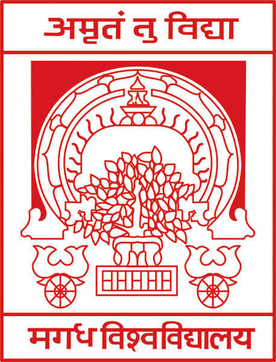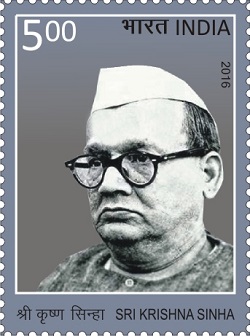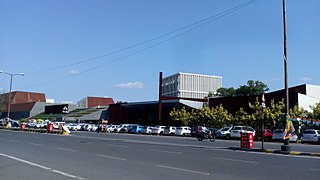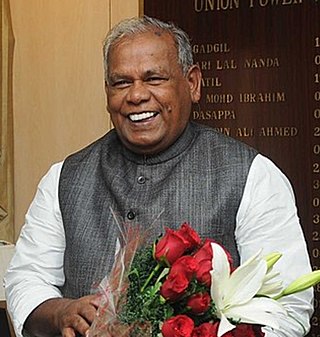
Bihar is a state in Eastern India. It is the third largest state by population, the 12th largest by area, and the 14th largest by GDP in 2021. Bihar borders Uttar Pradesh to its west, Nepal to the north, the northern part of West Bengal to the east, and Jharkhand to the south. Bihar is split by the river Ganges, which flows from west to east. On 15 November 2000, southern Bihar was ceded to form the new state of Jharkhand. Only 11.27% of the population of Bihar lives in urban areas as per a 2020 report. Additionally, almost 58% of Biharis are below the age of 25, giving Bihar the highest proportion of young people of any Indian state. The official language is Hindi, which shares official status alongside that of Urdu. The main native languages are Maithili, Magahi and Bhojpuri. But there are several other languages being spoken at smaller levels.

Gaya is a city, municipal corporation and the administrative headquarters of Gaya district and Magadh division of the Indian state of Bihar. Gaya is 116 kilometres (72 mi) south of Patna and is the state's second-largest city, with a population of 470,839. The city is surrounded on three sides by small, rocky hills, with the Phalgu River on its eastern side.

Bihar Sharif is the headquarters of Nalanda district and the fifth-largest sub-metropolitan area in the eastern Indian state of Bihar. Its name is a combination of two words: Bihar, derived from vihara, also the name of the state; and Sharif. The city is a hub of education and trade in southern Bihar, and the economy centers around agriculture supplemented by tourism, the education sector and household manufacturing. The ruins of the ancient Nalanda Mahavihara, a UNESCO World Heritage Site, are located near the city.

Magadh University is a public state university and institution of higher education in Bodhgaya, Bihar, India. It is recognised by the University Grants Commission (UGC).

Patna, the capital of Bihar state, India, is one of the oldest continuously inhabited places in the world and the history of Patna spans at least three millennia. Patna has the distinction of being associated with the two most ancient religions of the world, namely, Buddhism and Jainism. The ancient city of Pataliputra was the capital of the Mauryan, Shunga, and Gupta Empires.

Shri Krishna Singh (Sinha) (21 October 1887 – 31 January 1961), also known as Shri Babu, was the first chief minister of the Indian state of Bihar (1946–61). Except for the period of World War II, Sinha was the chief minister of Bihar from the time of the first Congress Ministry in 1937 until his death in 1961. Along with the Desh Ratna Rajendra Prasad and Bihar Vibhuti Anugrah Narayan Sinha (A.N. Sinha), Sinha is regarded among the 'Architects of Modern Bihar'. He also led the Dalit entry into the Baidyanath Dham temple (Vaidyanath Temple, Deoghar). He was the first chief minister in the country to abolish the zamindari system. He underwent terms of imprisonment for a total of about eight years in British India. Sinha's mass meetings brought many people to hear him. He was known as Bihar Kesari for his "lionlike roars" in public speaking. His close friend and Gandhian Bihar Vibhuti A.N. Sinha in his essay Mere Shri Babu wrote that, "Since 1921, the History of Bihar has been the history of the life of Shri Babu".

Basawon Singh or Basawan Singh also known as Basawon Sinha, was an Indian independence activist and a campaigner for the rights of the underprivileged, industrial labourers and agricultural workers.

Yogendra Shukla was an Indian nationalist and freedom fighter, notable for his contributions in the state of Bihar. He was incarcerated in the Cellular Jail, also known as Kala Pani, and was a founding member of the Hindustan Socialist Republican Association (HSRA). Shula, in collaboration with Basawon Singh (Sinha), was also instrumental in establishing the Congress Socialist Party in Bihar.

Anugrah Narayan Sinha, known as Bihar Vibhuti, was an Indian nationalist statesman, participant in Champaran Satyagraha, Gandhian & one of the architects of modern Bihar, who was the first Deputy Chief Minister and the Finance Minister of the Indian state of Bihar (1946–1957). He was also a Member of the Constituent Assembly of India, which was elected to write the Constitution of India and served in its first Parliament as an independent nation. He also held a range of portfolios including Labour, Local Self Government, Public Works, Supply & Price Control, Health and Agriculture. A.N. Sinha, affectionately called Anugrah Babu, was a very close associate of Mahatma Gandhi during the freedom struggle movement and worked with Bihar Kesari Sri Krishna Sinha to lead the Gandhian movement in Bihar. One of the leading nationalists in the Indian independence movement from Bihar after Dr Rajendra Prasad, he was elected as the Congress Party deputy leader in the state assembly to assume office as first Deputy Chief Minister cum Finance Minister of independent Bihar, and re-elected when the Congress Party won Bihar's first general election with a massive mandate in 1952.

Kishori Sinha was an Indian politician, social activist, a lifelong advocate of women's empowerment and a former two-term Member of Parliament from the Vaishali constituency. She was married to the former Chief Minister of Bihar Satyendra Narayan Sinha, who was a seven-term Member of Parliament, from the constituency of Aurangabad. Her son Nikhil Kumar had served as the Governor of Kerala and Governor of Nagaland.

Patna Medical College and Hospital was established in 1925 and originally known as Prince of Wales Medical College, is a medical college located in Patna, the state capital of Bihar, India.
Bihar is a state located in the eastern part of India.
Anant Sadashiv Altekar was a historian, archaeologist, and numismatist from Maharashtra, India. He was the Manindra Chandra Nandy's Professor and Head of the Department of Ancient Indian History and Culture at Banaras Hindu University in Varanasi, India, and later the director of the Kashi Prasad Jayaswal Research Institute and University Professor of Ancient Indian History and Culture at the Patna University, both in Patna, India.

Kashi Prasad Jayaswal was an Indian historian and lawyer. Jayaswal's works Hindu Polity (1918) and History of India, 150 A.D. to 350 A.D. (1933) are classics of ancient Indian historical literature. Among other things, he is credited with showing that Indian republics, based on principles of representation and collective decision-making, were among the most democratic polities of the ancient world.

Buddha Smriti Park also known as Buddha Memorial Park is an urban park located on Frazer Road near Patna Junction in Patna, India. This park has been designed by Vikram Lall and developed by the Bihar Government to commemorate the 2554th birth anniversary of the Buddha. This park was inaugurated by the 14th Dalai Lama.

Bihar Museum is a state museum located in Patna. It was partially opened in August 2015. 'The children's museum', the main entrance area, and an orientation theatre were the only parts opened to the public in August 2015. Later, in October 2017 remaining galleries were also opened. More than 100 artifacts were transferred here from Patna Museum.

Jitan Ram Manjhi is an Indian politician from the eastern state of Bihar who served as its 23rd Chief Minister from 20 May 2014 to 20 February 2015. He was the founding President of Hindustani Awam Morcha (HAM). Previously, he had served as minister for scheduled castes and scheduled tribes welfare in Nitish Kumar's cabinet. He has been a minister in several Bihar state governments, under multiple chief ministers like Chandrashekhar Singh, Bindeshwari Dubey, Satyendra Narayan Sinha, Jagannath Mishra, Lalu Prasad Yadav and Rabri Devi.
Bindeshwari Prasad Sinha (1919-2002) was an Indian archaeologist and historian specialising in ancient Indian history. Sinha was a professor and head of the Department of History and Archaeology at Patna University. He was the founder of Bihar state's Directorate of Archaeology and Museums. He was also the director of the K. P. Jayaswal Research Institute in Patna.
Fool Bahadur is a novel in Magahi language by Indian author Jayanath Pati that was published in 1928 and was the first novel written in Magahi Language. It was a Comic novel and was published on first of April on April Fools' Day.
























